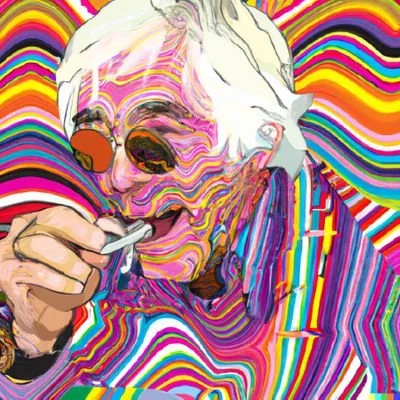This is the best summary I could come up with:
When she fed that plastic to bacteria after pretreatment with “sunlight” – a UV lamp – in a bottle of simulated seawater, she saw that special version of carbon appear as CO2 above the water.
“The treatment with UV light was necessary because we already know that sunlight partially breaks down plastic into bite-sized chunks for bacteria,” the researcher explains.
Even though marine microbiologist Goudriaan is very excited about the plastic-eating bacteria, she stresses that microbial digestion is not a solution to the huge problem of all the plastic floating on and in our oceans.
Recently Goudriaan’s colleague Annalisa Delre published a paper about sun light which breaks down plastics on the ocean’s surfaces.
In the latest issue of Marine Pollution Bulletin, PhD student Annalisa Delre and colleagues calculate that about two percent of visibly floating plastic may disappear from the ocean surface in this way each year.
Our data show that sunlight could thus have degraded a substantial amount of all the floating plastic that has been littered into the oceans since the 1950s," says Delre.
I’m a bot and I’m open source!
deleted by creator
Plastics are only made up of carbon, hydrogen, oxygen, nitrogen, chlorine, and sulfur though, not very exotic.
I found this article on stuff that might be able to get rid of it
Microbes in oceans and soils across the globe are evolving to eat plastic, according to a study.
The research scanned more than 200m genes found in DNA samples taken from the environment and found 30,000 different enzymes that could degrade 10 different types of plastic.
No offence but using variety of elements in a molecules composition to determine its ‘exoticness’ is a horrible metric.
Human life is probably one of the most complex machines out there, and that’s all we are; shit carbon alone I’d say is the most exotic element due to its versatility, look at CNT’s, diamonds, and oil
(big fancy ones like uranium tend to be less interesting cause their lack of stability, carbon has 4 really stable bonds it can do a shitload with - aka hold a plastic bottle together for a couple thousand years)
It’d be weird if something didn’t evolve to eat it is my point. It’s just dead animals.
Sorta, evolution takes time and plastic is pretty biologically inert - hence why its hard to do anything with, its in like an energy deadzone
Forgive my ignorance, but isn’t that what UV does?
No worries! It does but only at the weakest points, and these break points would be more easily broken down by any means (chemical/biological or thermal through radiation).
The issue is that the entire molecule isnt made up of these, and so anything UV would be able to do (at least in our atmosphere), biologically bactieria can’t do much better.
Its also part of the reason we can’t just toss our trash in a big ol UV light or just leave it out in the sun and expect it to disappear; all its useful properties will but the brittle plastic leftover won’t. This is why recycling plastic is so hard compared to other materials.
Thanks
I’ll take “last organisms standing on earth” for 100 , Alex.
I take “new life form that was designed to eat all plastic waste to eating all plastic period” for 100.
This could turn out good or bad.
I’ll take “new life form designed to eat plastic evolves to produce waste products worse for the ocean than plastic” for 200.
This is the weirdest episode of jeopardy…
Lol true platic poop that can’t be fun.
Yeah sounds like a great idea in theory. But just imagine a bacteria with an heavy appetite for plastics escapes from the laboratory and starts consuming plastics. Imagine how much of a vehicle is plastic, or your clothes, etc. That could get ugly real fast.




